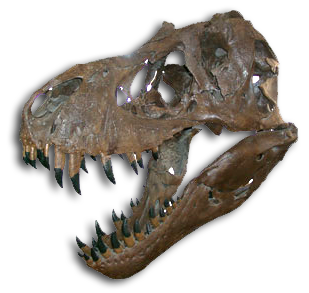Item Number
331
Type
image
Description
Petoskey Stone
Size
14x13
Status
Out of Inventory
Original Site
Michigan
Date Acquired
1982
Notes
A Petoskey is a fossil colonial coral. These corals lived in warm shallow seas that covered Michigan during Devonian time, some 350 million years ago. June 28, 1965, Governor George Romney signed a bill that made the Petoskey Stone Michigan's official State Stone. The designation of Hexagonaria percarinata was made by Dr. Edwin C. Stumm in 1969. This specific fossil coral is found only in the rock strata known as the Alpena Limestone. The Alpena Limestone is part of the Traverse Group of Devonian age. The Alpena Limestone is a mixture of limestones and shales. The outcrops of these rocks are restricted to the Little Traverse Bay area near Petoskey. Pleistocene glaciers (about two million years ago) plucked Petoskeys (and many other rocks) from the bedrock and spread them over Michigan and surrounding areas. This is why Petoskeys can be found in gravel pits and along our beautiful beaches far from the Petoskey area. The soft living tissue of the coral was called a polyp. At the center of this was for food intake, or the mouth. This dark spot, or eye, has been filled with mud of silt that petrified after falling into the openings. Surrounding the openings were tentacles that were used for gathering food and drawing it into the mouth. The living coral that turned into the Petoskey stone thrived on plankton that lived in the warm sea. Calcite, silica and other minerals have replaced the first elements of each cell. Each separate chamber, then, on each Petoskey stone, was a member of a thriving colony of living corals. For that reason the Petoskey stone is called a colony coral.
Preview

Description
A Petoskey is a fossil colonial coral. These corals lived in warm shallow seas that covered Michigan during Devonian time, some 350 million years ago. June 28, 1965, Governor George Romney signed a bill that made the Petoskey Stone Michigan's official State Stone. The designation of Hexagonaria percarinata was made by Dr. Edwin C. Stumm in 1969. This specific fossil coral is found only in the rock strata known as the Alpena Limestone. The Alpena Limestone is part of the Traverse Group of Devonian age. The Alpena Limestone is a mixture of limestones and shales. The outcrops of these rocks are restricted to the Little Traverse Bay area near Petoskey. Pleistocene glaciers (about two million years ago) plucked Petoskeys (and many other rocks) from the bedrock and spread them over Michigan and surrounding areas. This is why Petoskeys can be found in gravel pits and along our beautiful beaches far from the Petoskey area. The soft living tissue of the coral was called a polyp. At the center of this was for food intake, or the mouth. This dark spot, or eye, has been filled with mud of silt that petrified after falling into the openings. Surrounding the openings were tentacles that were used for gathering food and drawing it into the mouth. The living coral that turned into the Petoskey stone thrived on plankton that lived in the warm sea. Calcite, silica and other minerals have replaced the first elements of each cell. Each separate chamber, then, on each Petoskey stone, was a member of a thriving colony of living corals. For that reason the Petoskey stone is called a colony coral. 3x2
Keywords
Petoskey Stone A Petoskey is a fossil colonial coral. These corals lived in warm shallow seas that covered Michigan during Devonian time, some 350 million years ago. June 28, 1965, Governor George Romney signed a bill that made the Petoskey Stone Michigan's official State Stone. The designation of Hexagonaria percarinata was made by Dr. Edwin C. Stumm in 1969. This specific fossil coral is found only in the rock strata known as the Alpena Limestone. The Alpena Limestone is part of the Traverse Group of Devonian age. The Alpena Limestone is a mixture of limestones and shales. The outcrops of these rocks are restricted to the Little Traverse Bay area near Petoskey. Pleistocene glaciers (about two million years ago) plucked Petoskeys (and many other rocks) from the bedrock and spread them over Michigan and surrounding areas. This is why Petoskeys can be found in gravel pits and along our beautiful beaches far from the Petoskey area. The soft living tissue of the coral was called a polyp. At the center of this was for food intake, or the mouth. This dark spot, or eye, has been filled with mud of silt that petrified after falling into the openings. Surrounding the openings were tentacles that were used for gathering food and drawing it into the mouth. The living coral that turned into the Petoskey stone thrived on plankton that lived in the warm sea. Calcite, silica and other minerals have replaced the first elements of each cell. Each separate chamber, then, on each Petoskey stone, was a member of a thriving colony of living corals. For that reason the Petoskey stone is called a colony coral. 1982 Fossil
Keywords
Petoskey Stone A Petoskey is a fossil colonial coral. These corals lived in warm shallow seas that covered Michigan during Devonian time, some 350 million years ago. June 28, 1965, Governor George Romney signed a bill that made the Petoskey Stone Michigan's official State Stone. The designation of Hexagonaria percarinata was made by Dr. Edwin C. Stumm in 1969. This specific fossil coral is found only in the rock strata known as the Alpena Limestone. The Alpena Limestone is part of the Traverse Group of Devonian age. The Alpena Limestone is a mixture of limestones and shales. The outcrops of these rocks are restricted to the Little Traverse Bay area near Petoskey. Pleistocene glaciers (about two million years ago) plucked Petoskeys (and many other rocks) from the bedrock and spread them over Michigan and surrounding areas. This is why Petoskeys can be found in gravel pits and along our beautiful beaches far from the Petoskey area. The soft living tissue of the coral was called a polyp. At the center of this was for food intake, or the mouth. This dark spot, or eye, has been filled with mud of silt that petrified after falling into the openings. Surrounding the openings were tentacles that were used for gathering food and drawing it into the mouth. The living coral that turned into the Petoskey stone thrived on plankton that lived in the warm sea. Calcite, silica and other minerals have replaced the first elements of each cell. Each separate chamber, then, on each Petoskey stone, was a member of a thriving colony of living corals. For that reason the Petoskey stone is called a colony coral. 1982 Fossil


